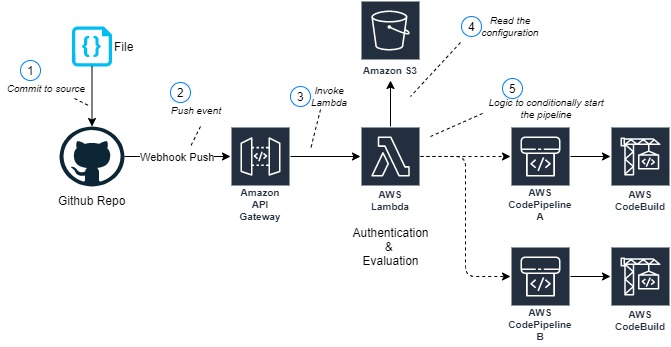AWS DevOps Blog
Category: Programing Language
Finding code inconsistencies using Amazon CodeGuru Reviewer
Here we are introducing the inconsistency detector for Java in Amazon CodeGuru Reviewer. CodeGuru Reviewer automatically analyzes pull requests (created in supported repositories such as AWS CodeCommit, GitHub, GitHub Enterprise, and Bitbucket) and generates recommendations for improving code quality. The Inconsistency Principle Software is repetitive, so it’s possible to mine usage specifications from the mining […]
Build Next-Generation Microservices with .NET 5 and gRPC on AWS
Microservices commonly communicate with JSON over HTTP/1.1. These technologies are ubiquitous and human-readable, but they aren’t optimized for communication between dozens or hundreds of microservices. Next-generation Web technologies, including gRPC and HTTP/2, significantly improve communication speed and efficiency between microservices. AWS offers the most complete platform for builders implementing microservices — and the addition of HTTP/2 and gRPC support in Application Load Balancer (ALB) provides an end-to-end solution for next-generation microservices. ALBs can inspect and route gRPC calls, enabling features like health checks, access logs, and gRPC-specific metrics. This post demonstrates .NET microservices communicating with gRPC via Application Load Balancers.
Deploying custom AWS Config rules developed for Terraform using AWS Config RDK
To help customers using Terraform for multi-cloud infrastructure deployment, we have introduced a new feature in the AWS Config Rule Development Kit (RDK) that allows you to export custom AWS Config rules to Terraform files so that you can deploy the RDK rules with Terraform. This blog post is a complement to the previous post […]
CICD on Serverless Applications using AWS CodeArtifact
Developing and deploying applications rapidly to users requires a working pipeline that accepts the user code (usually via a Git repository). AWS CodeArtifact was announced in 2020. It’s a secure and scalable artifact management product that easily integrates with other AWS products and services. CodeArtifact allows you to publish, store, and view packages, list package […]
EC2 Image Builder and Hands-free Hardening of Windows Images for AWS Elastic Beanstalk
In this blog post you will learn how to automate the process of customizing Elastic Beanstalk managed AMIs using EC2 Image Builder and apply the medium and low severity STIG settings to Windows instances whenever new platform versions are released.
Building a centralized Amazon CodeGuru Profiler dashboard for multi-account scenarios
This post shows you how to configure CodeGuru Profiler to collect multiple applications’ profiling data into a central account and review the applications’ performance data on one dashboard.
Introducing new self-paced courses to improve Java and Python code quality with Amazon CodeGuru
This post announces the availability of new self-paced where you learn how to use CodeGuru Reviewer to automatically scan your code base, identify hard-to-find bugs and vulnerabilities, and get recommendations for fixing the bugs and security issues.
Building an ARM64 Rust development environment using AWS Graviton2 and AWS CDK
2020 was the year that ARM chips made the headlines by moving from largely mobile form factors into the cloud thanks to AWS Graviton2, allowing you to have up to 40% better price performance over comparable current generation x86 Amazon Elastic Compute Cloud (Amazon EC2) and Amazon Relational Database Service (Amazon RDS) instances. We speak […]
Integrate GitHub monorepo with AWS CodePipeline to run project-specific CI/CD pipelines
Understand how to automate trigger of project specific code pipeline for GitHub mono repos users. Currently, if a customer is using GitHub as a version control system and he has only one repository which contains multiple folders each for a different project, change in any file, triggers the code pipeline for the whole repository rather than for the appropriate project. With this blog, they would be able to automate trigger of appropriate pipeline based on the project folder where the file gets changed.
Python support GA: improving Python code quality using Amazon CodeGuru Reviewer
We are pleased to announce the GA launch of Python support in Amazon CodeGuru Reviewer, a service that helps you improve source code quality by automatically detecting hard-to-find defects. CodeGuru Reviewer is powered by program analysis and machine learning, and trained on best practices and hard-learned lessons across millions of code reviews on open-source projects […]







